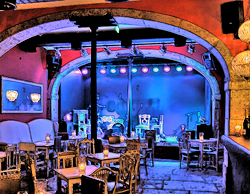Editor’s Note: This story was extracted from from RE/P, Vol 5, Number 1, which originally ran in Jan/Feb 1974. While somewhat dated in regard to specific technological advances, this text is still full of solid, relevant information.
“Multi-Function” is a phrase we have invented to describe the spectrum of challenges, problems and responsibilities sound people are continually exposed to while working to achieve the best possible audio environment in club-type establishments.
The obvious grammatical redundancy of the phrase is intended to emphasize what may well be the most demanding job in audio. “Multi-Function” equally describes the nature of the equipment. Many clubs have a built-in sound system, while others rely on the musicians to bring their own sound gear, and still others have a favored sound service contractor who is familiar with the club’s requirements.
The wide variety of club type operations has a great deal to do with the measure of effectiveness of various types of audio systems, permanent or portable systems, which are intended to be used in them.
Some of these establishments might best be called “theatre-clubs,” while others are traditional nightclubs. Some are simply bars, and still others of the same sort, removing the alcoholic connotation, are coffeehouses.
The conveyance of entertainment in one form or another – the owner’s profit margin notwithstanding – is the sole purpose of any of these types of establishment. Everything should play in second place to this entertainment consideration.
Additionally, for the purposes of this article, all clubs have a few other things in common; small audience, with seating for everyone (10-400), intimate atmosphere, probably some kind of food and beverage service during the performance. Dance floors are common, and are often a special problem. But, without a doubt, regardless of the type of club, one thing a sound person can be absolutely certain of is that there will not be enough room or tolerance allowed for a proper audio set-up.
Specifically, the audio environment and equipment in the finer clubs often rivals that found in small, high quality recording studios. A few have a booth in the audience, or set aside, with multiple input and output mixing consoles that control as many as thirty microphones, and banks of bi- or tri-amplified speakers.
Some of the better systems installed in larger rooms employ multiple banks of loudspeakers distributed around the club, driven through delay lines to equalize the transit time so that the direct sound from the stage arrives at nearly the same time as the sound from a nearby loudspeaker.
At the other end of the spectrum, there are jukebox and “Muzak” rejects, leftovers from someone’s discarded hi-fi junk. There is also a broad range of equipment intended primarily for only moderate to high level reproduction of music, or for speech-only reinforcement. These systems rarely justify the cost or effort put into their installation.















